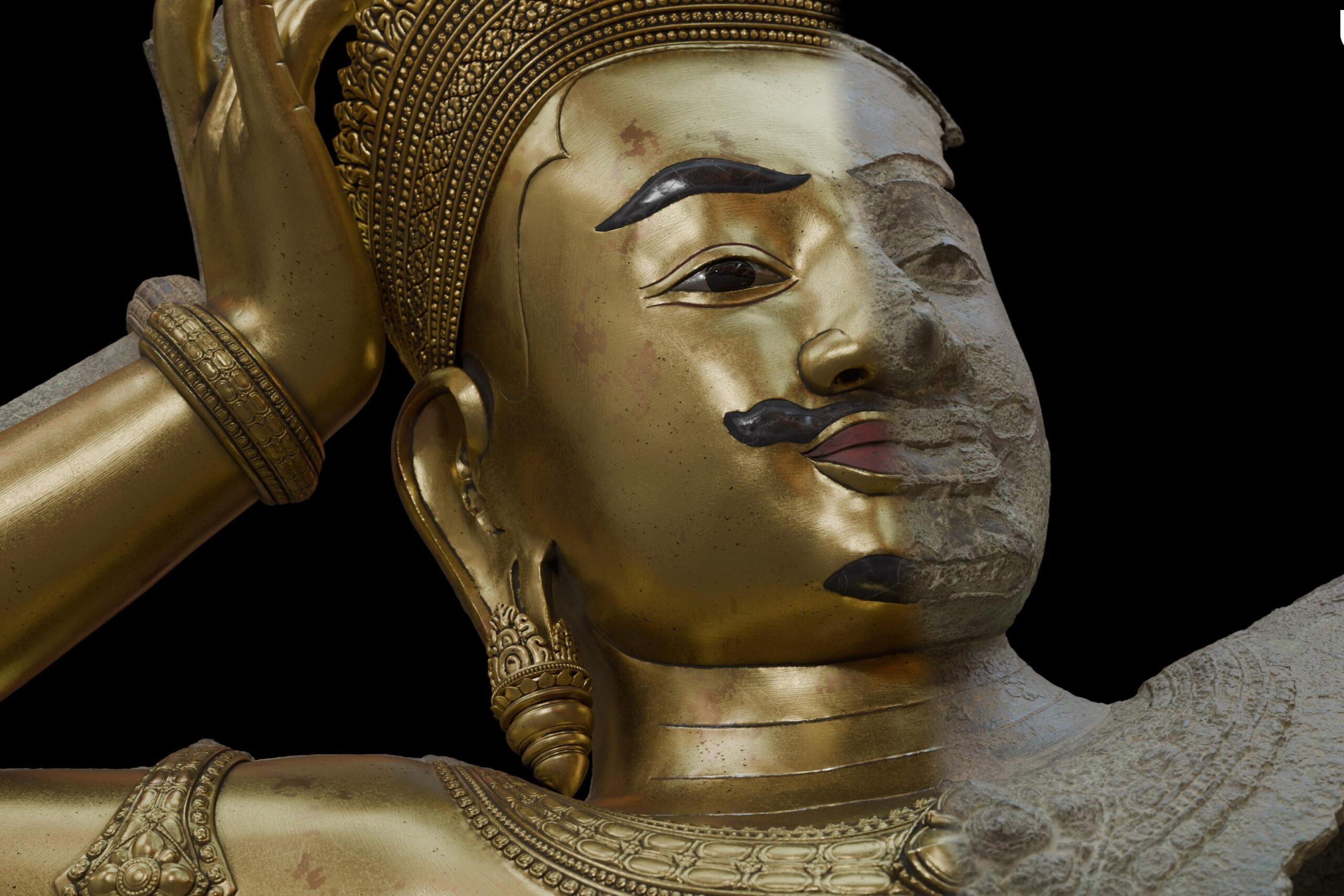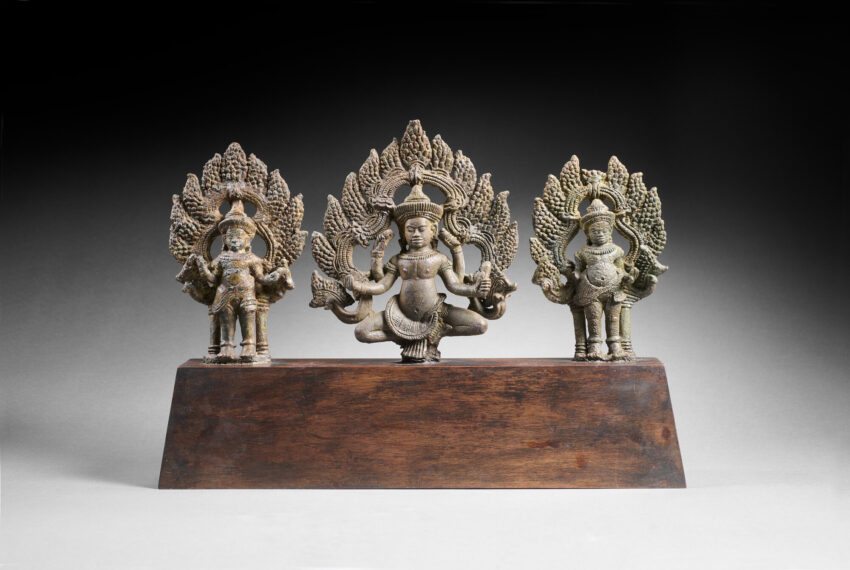
Three Things to Know About “Royal Bronzes,” as Told by Curator Pierre Baptiste
By Tara Kaushik
November 6, 2025—On October 25, 2025, Mia opened “Royal Bronzes: Cambodian Art of the Divine” in collaboration with the Musée Guimet in Paris and the National Museum of Cambodia, showcasing bronze statuary and other works from the ancient capital of Angkor.
Here, Pierre Baptiste, curator of Southeast Asian art at the Guimet, shares a few insights into the show. You can also watch Baptiste’s full lecture.
The West Mebon Vishnu Once Wore a Crown
In 1936, a man named Chhit-Lat, from the Cambodian village of Phum Kuk Thnot, had a dream. He declared to French archaeologist and conservator Maurice Glaize, who was overseeing the ancient temple complex of Angkor Wat, that “the Buddha had appeared to him, demanding that he be delivered from the suffocating earth and crushing stones.”
Chhit-Lat went straight to the temple of West Mebon at Angkor and there, digging about a meter deep into the central earthen platform, revealed part of the head, shoulder, and hand of a colossal bronze sculpture.” The man had proof, too—a bronze finger that clearly belonged to an enormous statue.
Glaize and a fellow conservator went to the site and discovered, in a well dug in the heart of the central islet, a huge head, face down. Excavation proved that this was no Buddha. The bust revealed a smiling, serene, young face—unmistakably Vishnu, principal deity of Hinduism, supreme lord and protector of the universe.
The two researchers unearthed additional fragments and elements of this great masterpiece of Khmer art, which form the West Mebon Vishnu reclining at the center of “Royal Bronzes.” A photogrammetric scan, combined with the patient work of virtual recreation, offers insight into the statue’s original, gilded appearance, complete with a detailed headpiece.

Buddha on the naga, Angkorian period, third quarter of the 12th century, Cambodia, province of Preah Vihear, Preah Khan de Kompong Svay, Sandstone, Paris, Guimet museum, Louis Delaporte mission (1873), MG 18127
“Royal Bronzes” Is an Exhibition of Ancient Stories
If you notice a pattern, there’s usually a story behind it. Buddha on the naga depicts the Buddha seated in meditation, surrounded by a formidable seven-headed naga (serpent). The story goes that when a violent storm caused the waters of a nearby lake to overflow, the naga Muchilinda coiled beneath the meditating Buddha to keep him above water, spreading its seven hoods to protect him. This representation would become the most frequently used image of the Buddha in Angkorian art.

Vishnu Triad Angkorian period, early 12th century Cambodia, Takeo province, Kirivong district, Prasat Phnom Bayang Copper-based alloy (not analyzed), Phnom Penh, National Museum of Cambodia, Henri Mauger mission (1936), Ga.5452.1-3
Many of the Objects Have Made a Long Journey Home
Complementing the West Mebon Vishnu in “Royal Bronzes” are 126 sculptures on loan from the National Museum of Cambodia. Together these pieces offer a stunning panorama of ancient Khmer art and embody a strong commitment to preserving Khmer heritage.
“For many years, our country was a victim of the illegal trafficking of artworks, which robbed us of significant portions of our history,” writes Phoeurng Sackona, the Cambodian Minister of Fine Arts & Culture. “Today, thanks to the dedicated efforts of authorities and experts, several plundered pieces have returned to their homeland and now hold pride of place in this exhibition.”
Baptiste notes the intense pillaging of Khmer stone and bronze statuaries, architectural decorations, and archaeological objects during modern conflicts in Cambodia. Over many decades, the country saw its vibrant past stolen, taken abroad to feed the international art market and various private collections. The exhibition’s presentation of these works aims to raise public awareness, particularly among younger generations, of the restitution efforts underway.
“As heirs to a past that still enriches and perpetuates our inspiration,” writes Sackona, “we today lay—with unshakable confidence—the foundations for a future in which our younger generations will be able to develop their sense of belonging through cultural and scientific exchanges.”
Learn More: Curator Talk at Mia
On Thursday, November 13, 2025, researchers David Bourgarit and Brice Vincent dive into the fascinating story behind one of Cambodia’s greatest treasures: the monumental bronze statue of the Hindu god Vishnu, reclining on the serpent Ananta. This statue, dated from the second half of the 11th century, was first unearthed at Angkor’s West Mebon temple in 1936. But its secrets have remained untold—until recently.
Thanks to the collaboration of Cambodian and French experts, more than 40 specialists joined forces to study the statue in Paris. Their research is shedding new light on big questions: How was such a massive bronze cast nearly a thousand years ago? Where did the metal come from? And what might this extraordinary work have looked like in its original glory?
Reserve free tickets to this talk.
